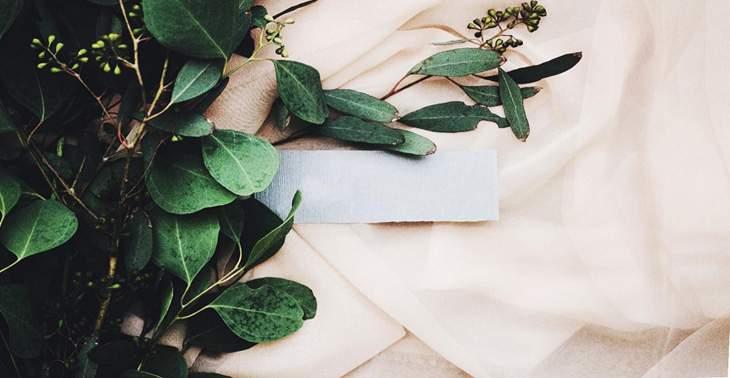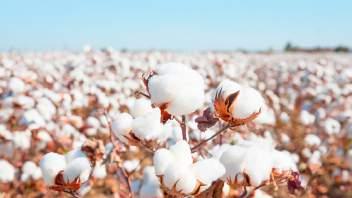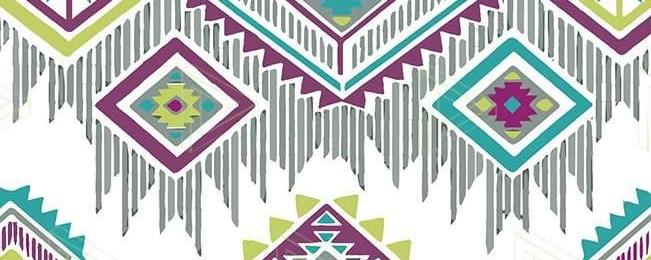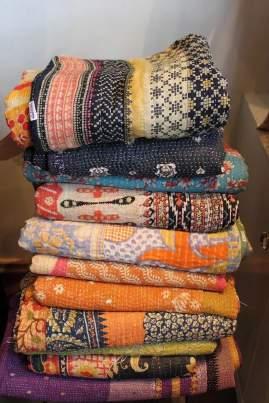
14 minute read
Sustainable fibres for Home furnishings
Ragini GUPTA
Intern at TVC P.G Student, Department of Textile Science and Apparel Design SNDT Women’s University
Advertisement
Tas compared to synthetic fabric. organic and eco-friendly materihe textile industry has been Let us start by throwing shade on als, cotton, wool, hemp, linen are an ongoing evolution- all good choice when ary industry since the selecting products. dawn of Human civili- Wool is a great fabric zation. The Textile in- and a good choice; dustry is well known for consuming large amount of energy, water and natural resources. While the industry is very important to sustain our daily life, it is Essentially, we should look for organic and eco-friendly materials, cotton, wool, hemp, linen are all good choice when selecting products. Wool is a great fabric and a good choice; as it also keeps the house warm during winter, wool curtains can be used in cold climate areas. Silk is also a good choice but can be expensive however can provide an authentic and aesthetic charm. as it also keeps the house warm during winter, wool curtains can be used in cold climate areas. Silk is also a good choice but can be expensive also very important to however can provide spread some thought over the impact of the industry on our planet as well. Every industry has an impact on our environment and the textile industry is forced to take the path of sustainability due to the high impact on environment, Sustainable home textiles, are materials which can be used, which do not harm the environment. Every input and output matters to create the final product, nothing is to be wasted and it has to be used within the industry for other products. The materials used, processes involved, quality of life led by labourers and the afterlife of the product are to be considered some home textiles. Curtains are an authentic and aesthetic charm. when we think about sustainabil- used in practically every house- Cotton is one of the most common ity. hold yet, we do not think about and most used fabrics, but growOne way to ensure a more mindful approach is, to look for sustainably made home products. As many popular fabrics used by fast fashion brands, are hidden with way too many chemicals and use up a large number of natural resources. Sustainable fabrics are best for our health as well as the planet. Susit much, but they have their own purpose. However, the synthetic materials that many curtains are made of, has a heavy impact on our environment. Synthetic fibres such as nylon, rayon, and polyester is not biodegradable, many curtains are made of these materials. ing cotton can be very problematic as conventional cotton requires a lot of chemical pesticide. Organic cotton is a better and environment-friendly option in place of traditionally grown cotton. Organic cotton uses all the organic fertilizers, pesticides, if needed are organic. This is done to aim for tainable fabrics are more durable Essentially, we should look for better soil health and to produce
22 HOME TEXTILE UPDATE organic cotton. Flower fabric, Byssus, Banana Fi- cial business. These days, organiAnother alternative is recycled fabrics. Recycled fabrics are made from scraps of fabrics converted into fibres and then again conbre, Milk fabric, Nettle fabric and Pineapple silk. In India, pineapple is a commonly used fruit. Pina is a textile material zations that will not embrace sustainable methodology, are most likely off guard all things considered. verted into yarns and fabrics ac- we get after processing pineapple It is a proven fact that consumer cording to end use. Recycled fi- leaves, it is known to have cooling awareness will play an important bres have the potential to reduce properties and good dyeability. role in the growth of sustainable the environmental impact of producing textiles to a large extent, because it makes use of wasted fabrics, which helps reduce the landfill load. Fashion is all about innovation, the industry is on its toes to create new sustainable fabrics. Its all about the choices in materials and in production processes. The production process, from manufacturing fibre to finished good poses great risk to the environment. Prohome textile industry in future. We can adapt to sustainable lifestyle, only when we change some small things that we do. To sum it up, to maintain a good relation with our planet we need to keep in mind the following things. duction and processing of sustain- • Minimize the use of materials able textiles helps to reduce the whenever necessary. Linen is also a natural fibre which has been around from very long. It is extracted from the stalks of negative impacts to the environment, New sustainable solutions need to be explored to meet the growing demand of sustainable textiles. For Example, for leather produc• Use of materials and resources with minimal environmental impact. • Producing lesser waste and keeping a check on the pollution. the flax plant. Linen requires very tion, using enzyme effectively • Reducing the ecological impact minimal water and pesticides, and removes the grease and is a sus- caused by distribution. even grows in poor-quality soil. Plus, nothing is wasted as every part of the plant is used. Linen is tainable alternative to chemicals used. This method can effectively remove large amount of fat, it can • To make reuse and recycle mate rials. naturally very strong and most save a lot of energy and time, rath- Reference resistant among other materials. Linen is a natural fibre, hence good to the planet. It produces strong fibres which can withstand high temperatures and adverse conditions. er than using harmful solvents. The ecological effects of the textile business, have driven all the huge organizations to change their arrangements and incorporate sustainability as their centre idea. A https://www.fibre2fashion.com/ industry-article/8491/eco-designfocal-point-of-sustainable-textiles https://goodonyou.eco/most-sustainable-fabrics/ Some examples of sustainable lot of fashion and retail brands https://www.sustainablejungle. eco-friendly fibres are Bamboo, have demonstrated that natural com/sustainable-living/ecoChitin, Fish Skin Leather, Lotus garments and textiles are benefi- friendly-organic-linen-curtains/



• www.innovativedesigns.in • innovative.designs.prints@gmail.com

Interiors defined : Home Textiles & categories
PRACHI GEHLOT
Trainee Editor at TVC


Hfloor covers, in present day use • Underlay- Covering set underrugs are affixed to the floor and neath the carpet to make walking ome textiles are fabrics and garments that are used primarily to furnish a home. for the most part cover the whole floor and carpets are not secured and seldom cover the whole floor. more relaxed and to reduce noise. • Pile Carpet- Piece of thick hefty fabric appended to Functional and aes- and covering the thetic uses of each de- whole floor of a room. termine the materials and design of each. Floor coverings provide some of the most traditional home texTextiles are a millennia old, and maybe close to as old as the dawn of human race. This makes materials one of our most established works of art, and one sort of home textiles may rank among the main types of this workmanship. Textiles have for some time been • Pile- Noticeable surface of a rug made of raised fibres that are cut or looped. tiles. In this article, we will see all the categories of Home Textiles in detail. utilized as floor covers, making a feeling of separation between the inside of a home and the earth. Indeed, even in traveling, floor covers are regularly seen as a need. In numerous societies, floor covers work as wall coverings as well. Beddings Bedding, otherwise called bedclothes is the materials laid over Floor coverings the sleeping mattress Textiles are a millennia old, and maybe close to as old as the dawn of human race. This makes materials one of our most established works of art, and one sort of home textiles Carpets and rugs also dampen the impact noise. (dictionary, n.d.) of a bed for cleanliness, warmth, as a cover to the mattress, and decorating purposes. Bedding is the removable and washable part of a human resting space. may rank among the main types of this workmanship. Textiles have for some time been utilized as floor covers, making a feeling of separation between the inside of a home and the earth. Indeed, even in traveling, floor covers are regu- Source: Macys.com larly seen as a need. In numerous societies, floor covers work as wall Types of bedcovering coverings as well. • Sheets- A bed sheet is a rectanFloor covering, material produced using fibres, felts, gums, elastic, or other natural or man-made substances applied or affixed to, or gular piece of material utilized either independently or in a couple as bedding, being set just beneath or above bed tenants laid upon, the level base surface • Fitted Sheet- It comes with an of a floor to give comfort, strength, •Rugs- Piece of thick hefty Fabric elastic hem to tightly fit on the wellbeing, and enrichment. Such ordinarily having a nap and cov- mattress. It acts as a base cover to materials incorporate both hand- ering a segment of the floor; it is the mattress. It should fit on the crafted and machine-made mats removable. mattress without slips. and covers and smooth-surfaced floor covers. Albeit the words rug and carpet are much of the time utilized conversely in reference to • Tackless Strip- Little portion of wood covered with tacks and nailed or stuck to the edge of the room; the carpet is secured to it. • Bottom Sheets- This sheet goes above the fitted bottom sheet and provides an extra cover and warmth to the bedding.


24 HOME TEXTILE UPDATE • Bedspread- A bedspread is a ioning in the blanket is kept in its lightweight, brightening bed cov- place with the lines of sewing that ering that can be utilized alone in are made in various designs. warm climate or as an ornamental addition to a bed in cold climate. Bedspreads are ideal bed covers during spring and late spring months and add an additional • Throw- Throws are small and thinner blankets which are used for décor purposes on beds or sofas. component of style to your bed • Pillow covers- These fabric covduring fall and winter. ers are used for covering the pil• Comforter- Comforter is a kind of sheet material made of two lows and they usually match the bedsheet. lengths of fabric or covering sewn Bath Textiles together and loaded up with insulative materials for warmth, most• Towels and bathrobes ly cotton fibre, wool, polyester or Towels are simply fabrics which acrylic. Like blankets, comforters are made absorbent by their physare for the most part laid over a ical structure. They may be made top bed sheet. absorbent by using thicker and • Duvet - A duvet is a sort of sheet material comprising of a delicate bag loaded up with down, feathers, fleece, cotton, silk or a manmade fiber, and usually has a removable cover, similar to a pillow and pillow case. Pople frequently utilize a duvet without a top bed sheet, as the duvet cover can promptly be removed and washed as regularly as the bed-sheets. coarser yarns, with more number of fine fibers and weaving with less epi and ppi. These types of towels are generally woven with plain weave. This loose structure with coarse yarns make a towel which is highly absorbent. Another way to makethe surface of the towel as highly absorbent is weaving the towel on dobby looms with loop piles, also called as terry. The length of these loops is what de• Coverlet- A lightweight cover/ termines how much will the towblanket that is usually thinner el absorb. Although terry can be than quilt and divet, but is usually manufactured by weaving or knitquilted. ting, it is usually woven. • Blanket- A large, usually rectangular or square piece of thick cloth which is used to cover one’s body while sleeping, for additional warmth. • Quilt- A quilt is a 3 layered bed covering that implies it is made out of 3 layers: the top, center and back. The top layer is really a pieced fabric in which various bits of textures are sewn together in various designs. The center layer, called batting, filling or wadding, is really the thick, cushy layer of any of these materials: fleece, down, cotton, or polyester that gives the warming impact. The back or base layer is like the top layer texture. All these 3 layers are sewed together through a cycle called sewing and this makes them one joint Source: https://www.richardhaworth.co.uk/terry-guest-towels Bathrobes are loose-fitted, coverings, like a wrap dress and dressing gowns and is made form a terry fabric or any absorbent fabpiece of texture. The focal cushric. Bathrobes are mostly found in hotels and resorts as they depict a sense of luxury. These days, bathrobes are preferred over towels because of the comfort factor attached to it.


Source: https://www.overstock. com/guides/how-to-choose-abathrobe Towels come in many sizes.
Source:https://beezzly.com/ home/organizing/bath-sheet-vsbath-towel The size is varied according to the end use but the types of fabric remain the same; which is terry or woven. • Shower Curtains Shower curtains add an essential element to every bathroom. It is used to cover the shower areas, cover the bathtub, or simply for décor purposes in the bathroom. The standard size of the shower curtain is 72 in x 72 in. Shower curtains are typically made of polyester, nylon, cotton, vinyl or their

blends. Source: https://www.bedbathandbeyond.com/store/product/ ugg-reg-olivia-shower-curtain-ingrey/5384776 • Bath mats A bath mat is manufactured specifically for preventing slips and wet floors in bathrooms. Bath mats are used right in front of the bathing tub or shower to soak up water when bathing. They are usually additionaly absorbent and have non-skid options for safety. Table Linens Table linens help to create a theme of table and add protects table while creating visually appealing table-scapes. • Table Covers- Table covers are mainly used to protect the table. Most of these table covers are ornamental, but also protects the table from scratches and spills. Table cover size depends on the size and shape of the table, i.e. square, rectangle or circle. • Table Skirting- Table skirtings are mostly used in banquet halls, weddings. Buffets and event venues to show elegance. The fibres used are nylon and polyester. • Table Runners- A table runner covers only the middle section of a table, i.e. running across the length of the table and is a great way to dress up the meal tables. Tale runners are usually selected in contrasting colors of the table cloth. • Table Mats- A placemat or a tablemat is used in a specific area of tables, to protect the table from hot dishes and hot pots. It also protects from food stains or water marks. Table mats are made form different materials, depending on the end use- decoration, protection, advertising (in case of restaurants, they use table mats to advertise their menu) • Table napkins- Table napkins are an essential for meals and are used to wipe the hands and fingers and to protect the garments from spills, drops, etc. They are also used to wipe the mouth and lips while eating. Table napkins are mostly made from cotton and or polyester and Viscose blends.

Source: Pinterest.com Kitchen Linens Kitchen Towels- Kitchen towels, similar to bath towels can be plain woven or terry towels. The only difference between a kitchen towel and a bath towel is that kitchen towels need to be stronger; as it is used to wipe spills, kitchen counters, clean chopping boards, exposure to hot surfaces, etc. Oven mitts- Oven mitts or mittens are quilted gloves, with or without finger divisions to help hold hot pots right from the oven. These mittens are made from cotton as cotton is an insulator, hence is an efficient use for mittens. Apron -An apron may be a garment that is worn over; an alternative covering and covers principally the front of the body. It protects the skin and garments from spills and heat while working in the kitchen.

caravane.co.uk

cindyhattersleydesign.com
Reference dictionary, V. (n.d.). Textile Floor Coverings. Retrieved from Visual dictionary.








